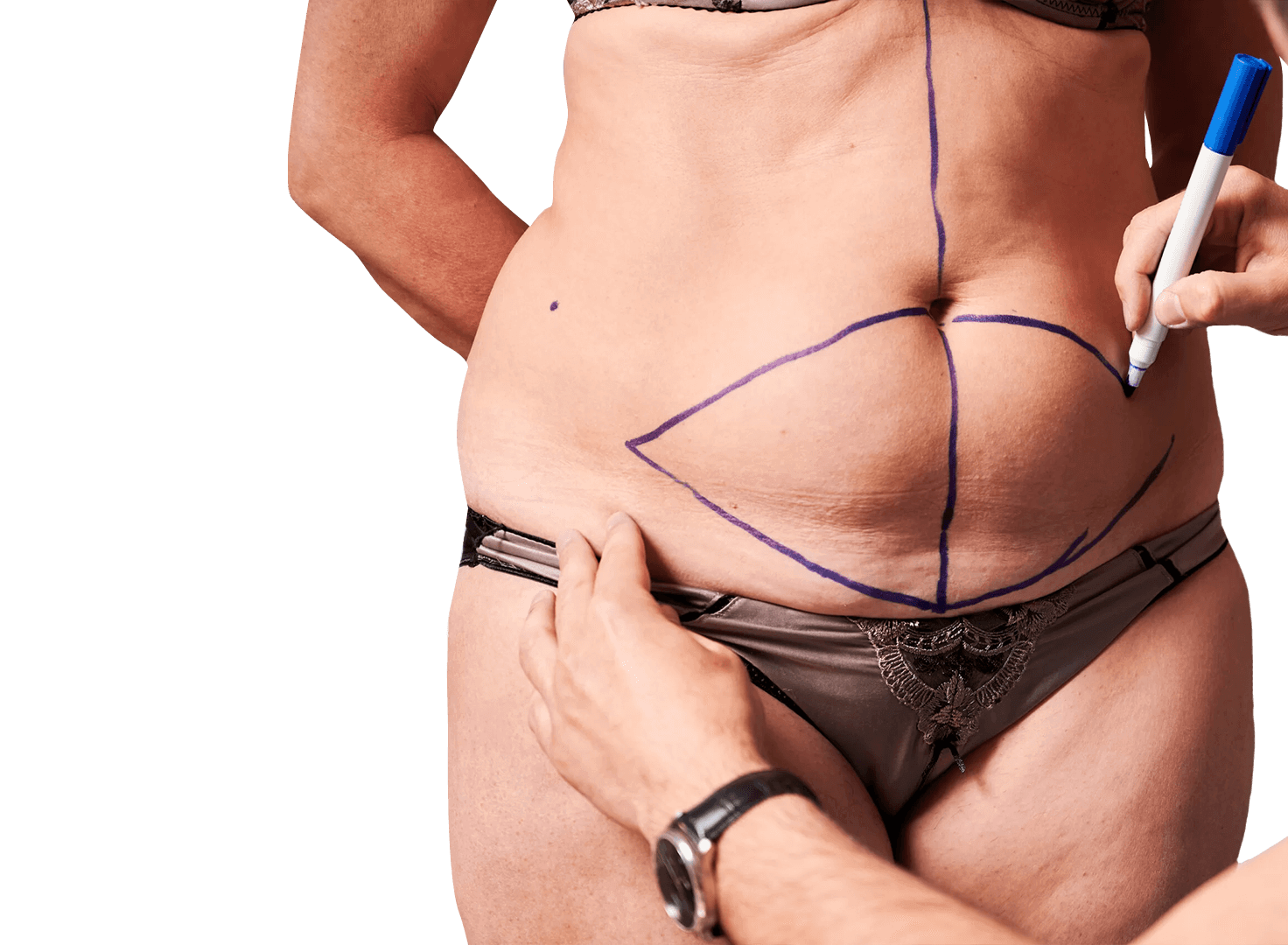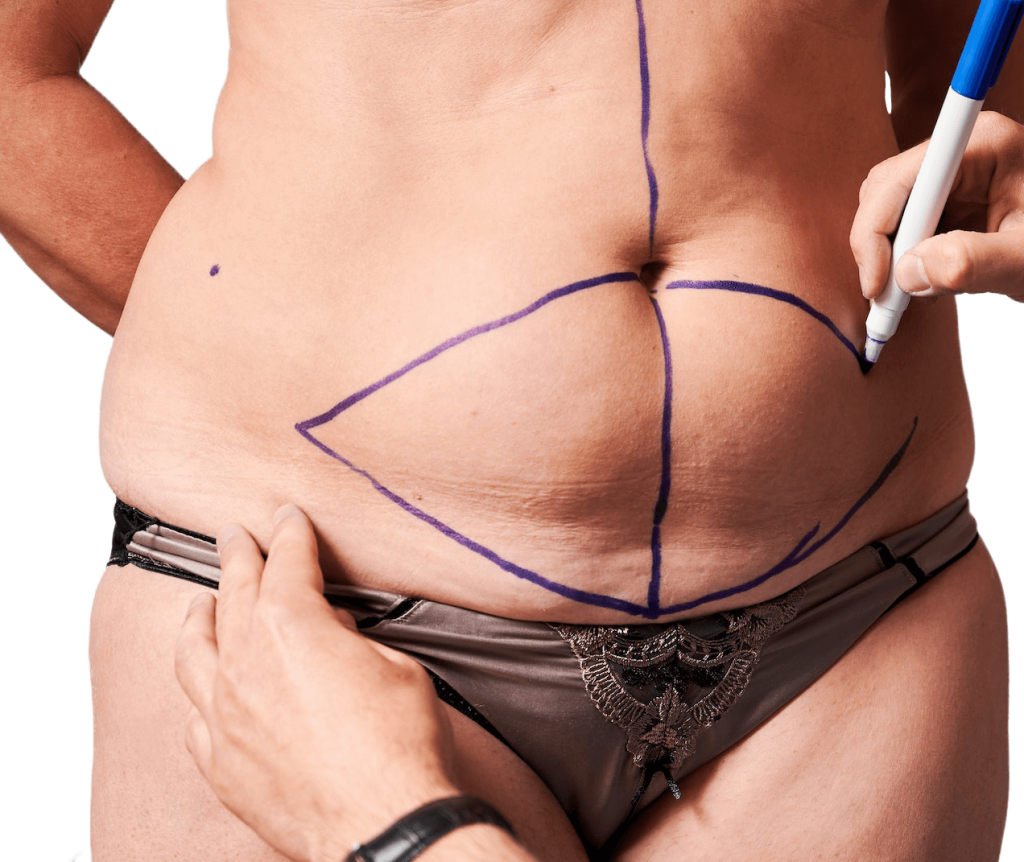
T
u
m
m
y
T
u
c
k
S
u
r
g
e
r
y
Abdominoplasty or tummy tuck surgery refines abdominal contour, tone and core strength.
A tummy tuck is medically known as an Abdominoplasty and is a surgical procedure that involves the removal of excess skin and fat from the lower abdominal area.
The procedure works on three layers of the abdomen: fatty tissue, skin, and the muscle underneath. When these layers become weakened, stretched or increase in size, it can lead to a protruding stomach.
A tummy tuck is suitable for both men and women equally, and aims to remove excess abdominal skin and reduce fat while tightening the abdominal wall muscles.

When is tummy tuck surgery appropriate?
- Wear tight fitting clothes that may otherwise reveal loose skin or excess fat
- Restore shape of their tummy after pregnancy and child rearing
- Remove skin and fat that cannot be addressed through diet and exercise alone
- Remove excess skin after significant weight loss
In addition to removing excess skin and fat, tummy tuck surgery can also improve abdominal muscle tone and core strength. When the body undergoes pregnancy or extreme weight loss, the stomach muscles can become separated and/or weakened. A tummy tuck or abdominoplasty surgery can repair, reconstruct and tighten the weakened muscles, thereby restoring abdominal strength, contour and tone.

What does tummy tuck surgery involve?
The abdominoplasty procedure can take anywhere from one to five hours. It is performed under general anaesthesia and requires a hospital admission for several days.
Some patients might be able to qualify for a rebate from Medicare and their private health insurance depending on individual circumstances.
A tummy tuck begins with a horizontal incision being made just within or above the pubic area. When patients have excess skin above the navel, an incision surrounding the navel is also made to allow it to be repositioned to the new location after excess skin and fat has been removed. However, when the amount of loose skin is minimal, and excess fat deposits are located below the navel, a short horizontal incision is all that is necessary (a ‘mini-abdominoplasty’).
A tummy tuck may also involve tightening the underlying abdominal ‘six-pack’ muscles using surgical stitching (sutures). Liposuction may also be necessary in conjunction with the tummy tuck to remove additional fat deposits and achieve the optimal contour. The incision type, amount of skin needing to be removed and the specifics of the procedure are all individualised.
After tummy tuck surgery, tubes will be placed under your abdominal skin to collect excess fluid. A specialised dressing will be used to aid wound healing. A binder or special compression garment will be used for several weeks after surgery to reduce swelling, control postoperative pain and improve final contour.
Scarring typically fades after 3 to 6 months but final results may take up to 12 months to visualise.
Recovery time will vary from patient to patient, but the following times are a typical guide:
- At least 2 weeks off work
- No driving for 2 weeks
- No strenuous exercises for 6 weeks

All surgery carries risks. Images displayed are educational and illustrative, and do not necessarily reflect universal outcomes.
